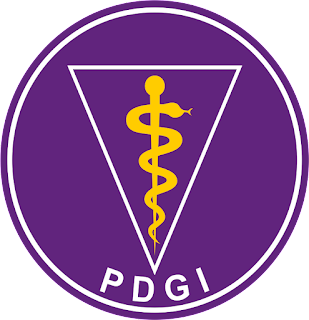POTENTIAL OF NASAL AND ORAL SPRAYS OF ALLYL DISULFIDE GARLIC EXTRACT AS PROTECTION AGAINST SARS-COV-2
Abstract
Background: Severe Acute Respiratory Syndrome Corona Virus 2 (SARS-CoV-2), a virus that causes COVID-19 disease, occurred in 2019. The prevalence of COVID-19 was increasing and spreading rapidly in several countries including Indonesia. Some efforts have been proposed to reduce the coronavirus outbreak, which is the exploration potentials inhibitor of SARS-CoV-2, vaccination, and improving health protocols by implementing 5M. This study characterized several formulations of nasal spray and evaluated their biological function as antivirus.
Method: The garlic was used in this study, crude extract performed by garlic extraction using maseration and evaporated using rotary evaporator. The garlic crude extract was prepared to make nasal and oral sprayer agent and evaluated using thin layer chromatography. Nasal and oral spray composition was modelled and docked with spike glycoprotein of SARS-CoV-2 and angiotensin converting enzyme-2 (ACE-2). Garlic extract showed containing allyl sulfide as bioactive compound in garlic, which was detected at Rf 0.5. biological functions revealed that the component of nasal and oral spray have antiviral agents and block the spike glycoprotein – ACE2 interaction.
Result: The allyl disulfide complex detected several active amino acid residues, both with the spike glycoprotein protein and the ACE2 receptor.
Conclusion: This study suggested that the nasal and oral spray garlic has the potential as an antiviral, especially inhibiting the interaction between ACE2 and spike glycoprotein. Further in vitro and in vivo studies are required for advance investigation.
Keywords
Full Text:
PDF (Bahasa Indonesia)References
Susilo A, Rumende CM, Pitoyo CW, Santoso WD, Yulianti M, Herikurniawan H, et al. Coronavirus Disease 2019: Tinjauan Literatur Terkini. J Penyakit Dalam Indones. 2020;7(1):45.
Moulia MN, Syarief R, Iriani ES, Kusumaningrum HD, Suyatma NE. Antimikroba Ekstrak Bawang Putih. J Pangan. 2018;27(1):55–66.
Thuy BTP, My TTA, Hai NTT, Hieu LT, Hoa TT, Thi Phuong Loan H, et al. Investigation into SARS-CoV-2 Resistance of Compounds in Garlic Essential Oil. ACS Omega. 2020;5(14):8312–20.
Septiana E. Prospek Senyawa Bahan Alam Sebagai Antivirus Dalam Menghambat SARS-CoV-2. Bio Trends. 2020;11(1):30–8.
Prastiwi R, Siska S, Marlita N. Parameter Fisikokimia dan Analisis Kadar Allyl Disulfide dalam Ekstrak Etanol 70% Bawang Putih (Allium sativum L.) dengan Perbandingan Daerah Tempat Tumbuh. Pharm Sci Res. 2017;4(1):32–47.
Sasmita M, Akademi. Mutu Fisik Sediaan Suspensi Oral Spray Ekstrak Rimpang Kencur ( Kaempferia Galanga L .) The Quality Of Physical Preparation Suspension An Oral Spray Extract Rhizomes Kencur ( kaempferia galanga L . ) Sasmita , Mardhiyah Akademi Farmasi Putra Indonesia Mal. 2012;1–9.
Martins N, Petropoulos S, Ferreira ICFR. Chemical composition and bioactive compounds of garlic (Allium sativum L.) as affected by pre- and post-harvest conditions: A review. Food Chem. 2016;211:41–50.
Shekh S, Reddy KKA, Gowd KH. In silico allicin induced S-thioallylation of SARS-CoV-2 main protease. J Sulfur Chem [Internet]. 2021;42(1):109–20. Available from: https://doi.org/17415993.2020.1817457
Pritacindy AP, Supriyadi S, Kurniawan A. Uji Efektifitas Ekstrak Bawang Putih (Allium Sativum) Sebagai Insektisida Terhadap Kutu Rambut (Pediculus Capitis). Prev Indones J Public Heal. 2017;2(1):1.
Sumarmi S. Kerja Harmoni Zat Gizi dalam Meningkatkan Imunitas Tubuh Terhadap Covid-19: Mini Review. Amerta Nutr. 2020;4(3):250.
Paraskevis D, Kostaki EG, Magiorkinis G, Panayiotakopoulos G, Sourvinos G, Tsiodras S. Full-genome evolutionary analysis of the novel corona virus (2019-nCoV) rejects the hypothesis of emergence as a result of a recent recombination event. Infect Genet Evol [Internet]. 2020;79(January):104212. Available from: https://doi.org/10.1016/j.meegid.2020.1042
DOI: http://dx.doi.org/10.30659/odj.9.0.131-136
Refbacks
- There are currently no refbacks.

This work is licensed under a Lisensi Creative Commons Atribusi-BerbagiSerupa 4.0 Internasional.
Contact us: Odonto Dental Journal: Jl. Raya Kaligawe Km.4, PO BOX 1054/SM Semarang, Central Java, Indonesia, 50112. Email: odontodentaljournal@unissula.ac.id



